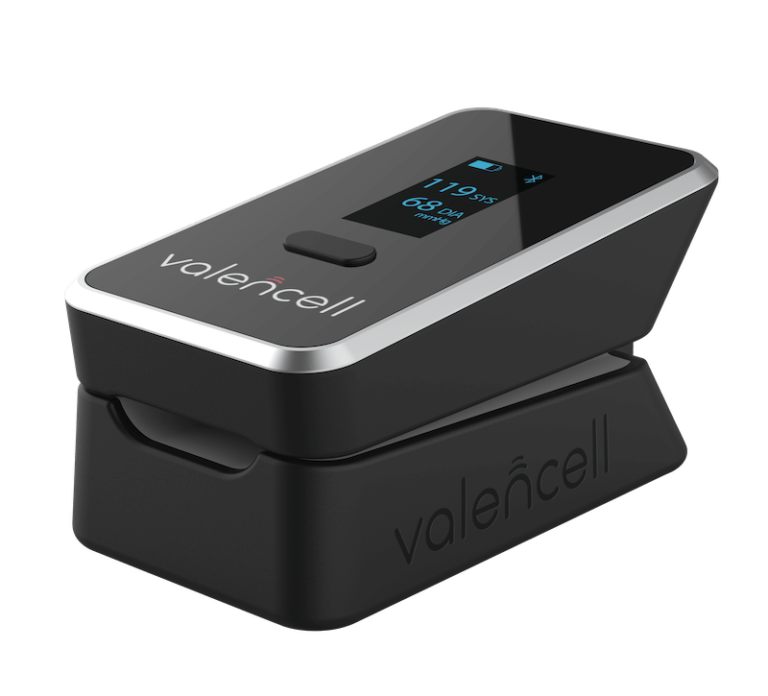Developing innovative, life-changing solutions comes with hurdles—such as getting U.S. FDA (Food and Drug Admin.) clearance for medical devices. Let’s look at one example of the process to bring such a device to market.
Steven LeBoeuf, president and cofounder, Valencell Inc., began his career at General Electric, where he pioneered innovations in solid state materials, multiwavelength optoelectronic devices, high-power electronics, nanostructured materials and devices, and biochemical sensor systems. In 2006, he founded Valencell and is now the inventor of more than 100 granted patents in the field of wearable biomedical sensing.
In a recent conversation, I sat down with him to discuss how his company has evolved. He tells me, “When you and I last met, Valencell was really focused on being a technology provider. When we started the company, the vision was we would produce these products that would be in what people already wear.”
Soon, he saw new medical opportunities—which has now resulted in his company’s latest CES announcement. Still pending FDA clearance, Valencell has unveiled a calibration-free, cuffless blood pressure monitoring solution.
Globally, more than a billion people suffer from hypertension, and it accounts for roughly 10 million deaths per year, yet often hypertension has little or no symptoms and is difficult to manage on an ongoing basis. Critical to managing hypertension and saving lives are regular and reliable blood pressure measurements, yet in a nationwide survey, 62% of Americans with hypertension only measure their blood pressure a few times a month or less.
The big benefit with Valencell’s new product is there is no more need for a cuff—which can often not fit correctly or can be challenging for young children or disabled people to keep on for a lengthy period of time. The objective is to help people monitor and manage hypertension by combining an app with an over-the-counter device to measure blood pressure from the finger.
“The product works by three inputs. I will explain all three of those,” he says. “The first input is there is an onboard accelerometer, so we are measuring motion. The second input is PPG data, so optical data, so we look at optical scatter from the body, as blood is flowing. The third thing is metadata, so what I mean for this to work, we need to know your age, your weight, and your height. It is also helpful to know your biological sex in the calculations.
“And the reason that is important is our machine learning model takes all that input to turn it into what your blood pressure is. Because your blood pressure is related to the blood flow information that we measure through a variety of parameters, some of which we measure and some which require input from. The more you weigh, the more overall blood flow you have. So, the model takes advantage of that. The older you are, typically, the less compliant your arteries are. The model takes that into effect.”
Photoplethysmography sensors within the device use reflected light to measure blood flow patterns. Proprietary AI (artificial intelligence) algorithms, developed from datasets comprising more than 7,000 patients, will be used to process this information with physical characteristics (age, weight, sex, height) to calculate a blood pressure measurement. Diastolic and systolic results are then displayed on the device’s built-in screen and transmitted via Bluetooth to the app.
The challenge is technology in general can be licensed pretty straightforward in nonregulated markets, but getting FDA approval for medical devices can be a challenging and lengthy process. The company is targeting FDA clearance in late 2023.
“We have had our discussions with the FDA,” he says. “What took us the longest time was to get them to approve our validation plan because when we first presented this concept to the FDA what they told us was that—and this was two years ago—no one had presented to them a cuffless way to measure blood pressure that was suitable for over the counter and didn’t have calibration.”
He goes on to explain cuffless solutions—outside of Valencell’s solution—require a calibration, and this is challenging for an OTC solution as there are real concerns that it will be difficult for people to calibrate their devices themselves, without the ongoing help of medical professionals.
Now, it is a waiting game—but LeBoeuf is confident the company will get approval later this year. Once that happens, Americans will have a much easier way to keep a pulse on their blood pressure. Certainly, we can also expect more digital therapeutics in the future, as new algorithms can track health data. Way to go LeBoeuf.
Want to tweet about this article? Use hashtags #IoT #sustainability #AI #5G #cloud #edge #futureofwork #digitaltransformation #green #ecosystem #environmental #circularworld


